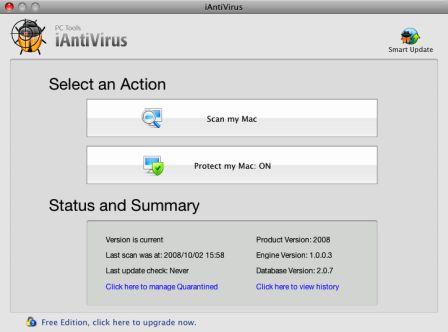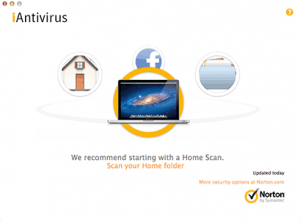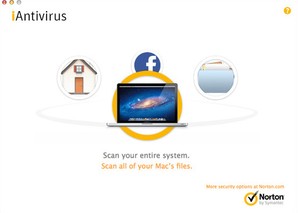

How to know that your Mac is infectedīefore you learn how to find virus on Mac, get acquainted with the main signs of your Mac being infected. Do yourself a favor and delete that file immediately. dmg file instead - that is as red as a red flag gets in terms of viruses. If you’re ever trying to download something you know is supposed to be an image, music, movie, or document, but you get a.
Iantivirus download mac install#
dmg file, because it was created by Apple itself to help install good software on your computer. The infamous Silver Sparrow virus - disguised as the macOS Installer Javascript API - specifically targets Macs with M1 chips and is believed to have infected over 30k Macs at the time of writing. While Apple’s new M1 Macs are considered more secure than Intel-based models, they get viruses too.

The latest adware could be a Trojan hiding in one of your Xcode projects, which is hard to recognize and equally hard to delete. However, not all viruses take the shock-and-scare approach to getting on your Mac. Most of us are familiar with recognizing what a virus looks like thanks to its atrocious design and alarming vocabulary. While Apple takes a lot of security precautions, the level of protection depends on your knowledge of how to check for malware on Mac.

It’s wild to think that even iPads and iPhones can contract malware. In 2018, Apple discovered flaws in their Intel processor chips that could lead to two kinds of very ambitious strains of Mac viruses too. A popular malware virus of 2017 was embedded into a Word document - a Mac Word file, not a PC one. The answer is yes, all computers, even Macs, are vulnerable to malware (short for malicious software). “Do you need a virus checker for Macs?” one may ask. In this guide, we explain how to detect malware on Mac (both with virus checker software and manually), as well as how to protect your Mac from getting infected in the first place. Whether you want to know how to find virus on MacBook Air, MacBook Pro, or iMac, learning to keep your information safe first is necessary and easy, with a few tips from the professionals. This fake "update" contains malware, which then infects your system.įlash has now been replaced by HTML5, so there is no need to install or use Adobe Flash anymore.Make your Mac fast and secure with CleanMyMac X.Ĭomputer viruses hold a sweet spot between boring, everyday occurrences, dating back to the 70s, and dramatic, science fiction-fueled monsters that will haunt us in the digital world.
Iantivirus download mac movie#
Many security firms have recommended not to install Flash Player, as a lot of malware is introduced in the form of fake Flash Player updates.įor example, people who want to download or watch a video or movie online (for free) find that they need to update the Flash player from the host's website in order to view the content. Related: What Happened When We Responded to a Phishing Email? Don't Install Adobe Flash PlayerĪdobe discontinued Flash Player on December 31, 2020, and for good reason. It's important to note that most antivirus programs don't protect against phishing emails or scams, so it's vital that you avoid them yourself if you want to keep your Mac protected.

The link installs malware on your system that can damage it and hijack your data. These usually contain a seemingly authentic link that many users fall for. Malware is commonly found in phishing or spam emails.


 0 kommentar(er)
0 kommentar(er)
